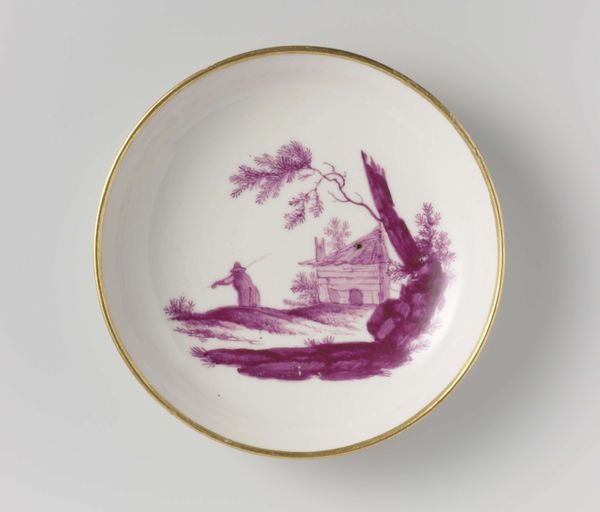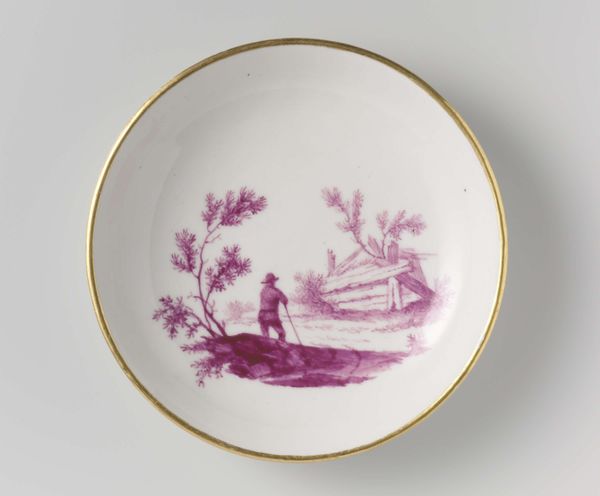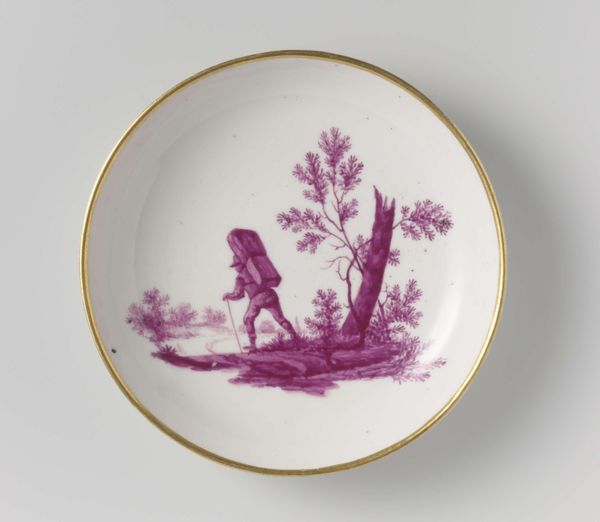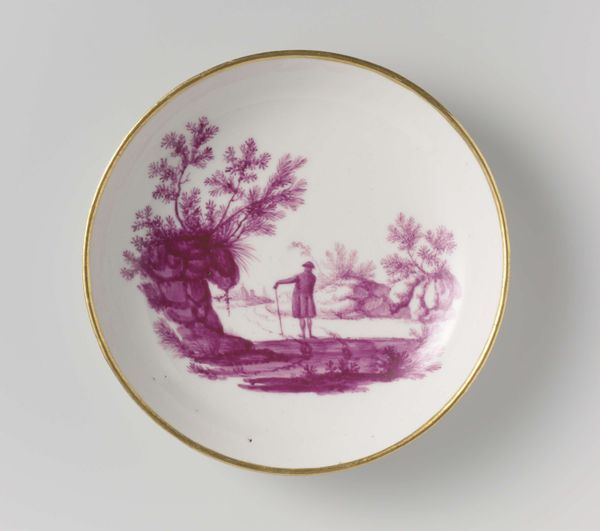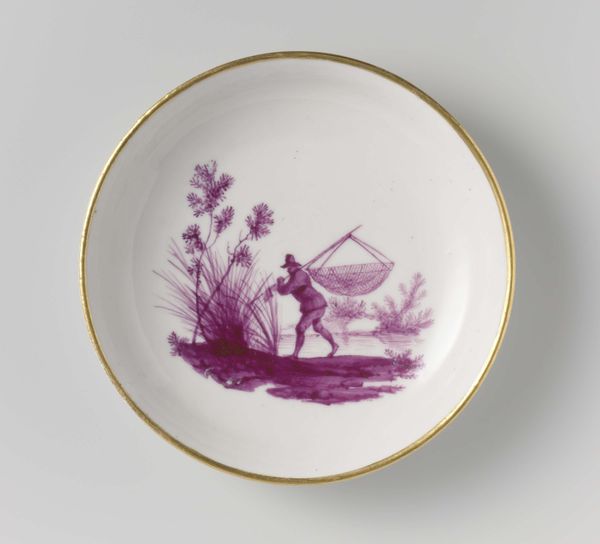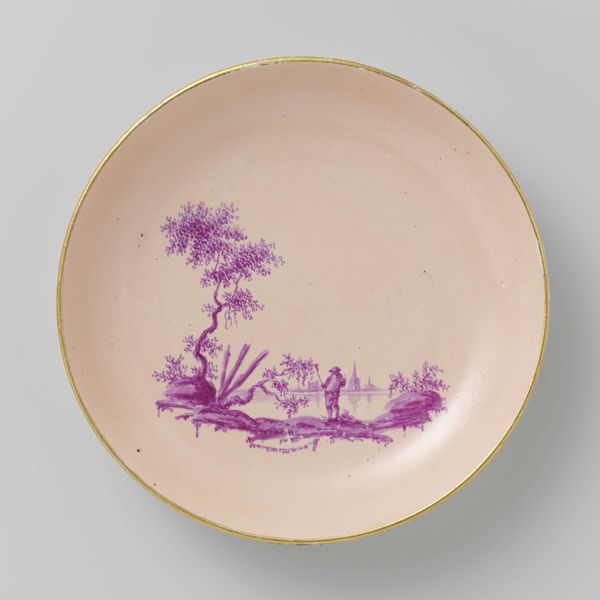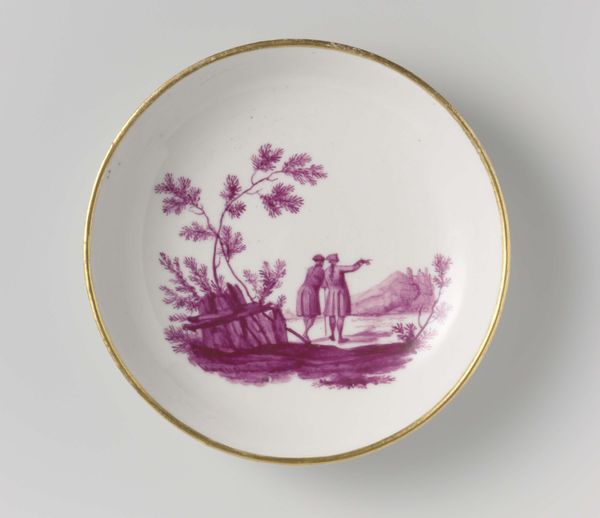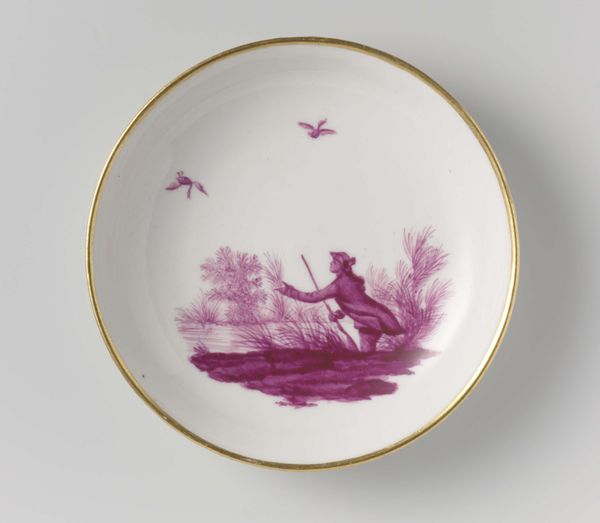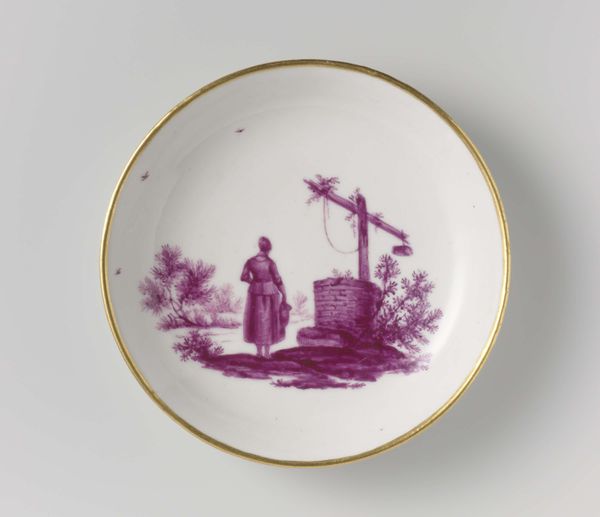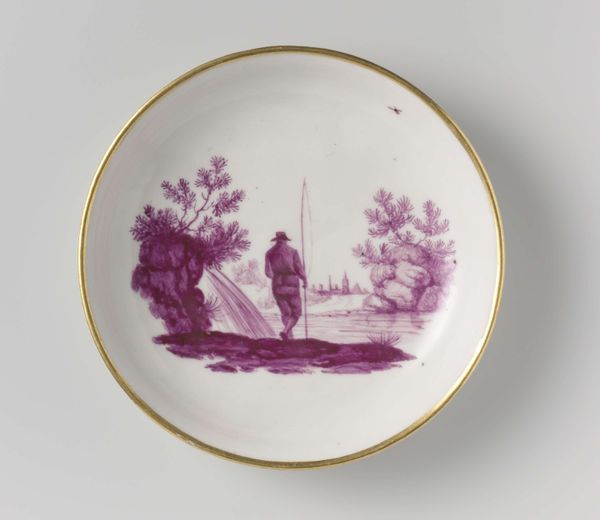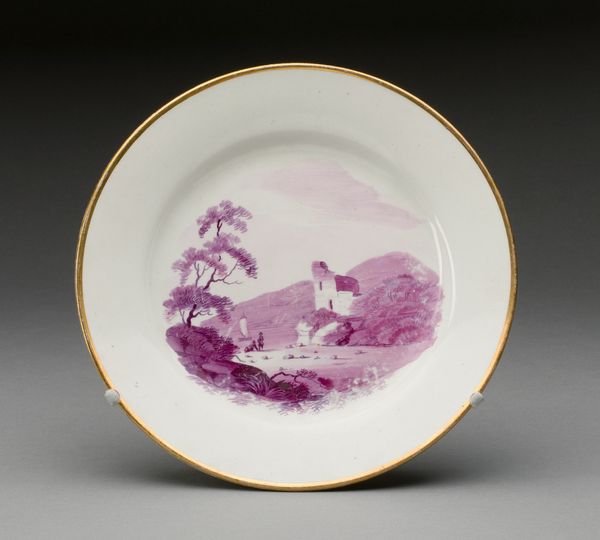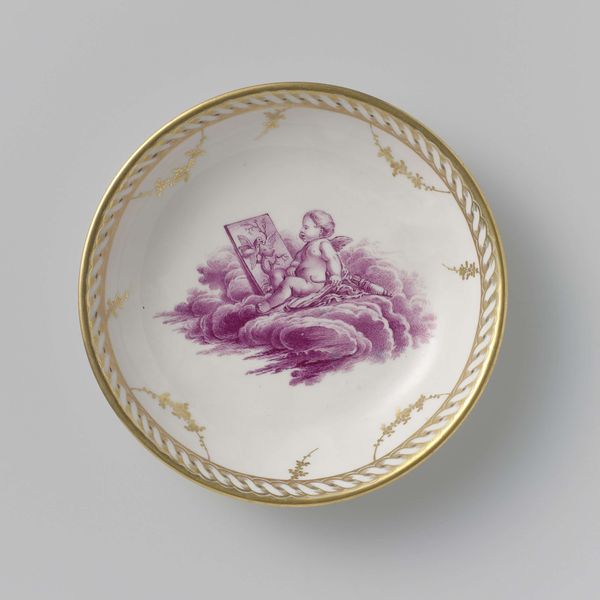
drawing, print, porcelain
#
drawing
#
neoclacissism
# print
#
landscape
#
porcelain
#
stoneware
#
genre-painting
Dimensions: height 2.2 cm, diameter 12.0 cm
Copyright: Rijks Museum: Open Domain
Editor: This is “Schotel,” a porcelain dish from Loosdrecht, dating back to 1775. What strikes me is how a simple landscape scene is painted on such a delicate surface. The lone figure almost feels symbolic. How do you interpret this work? Curator: It’s a captivating example of Neoclassical design meeting genre painting. Note the purple monochrome. What does that evoke for you? Does it signal something beyond a mere visual description? Editor: The purple almost gives it a nostalgic or dreamlike quality. I'm drawn to the lone figure—could this relate to ideas about humanity and nature? Curator: Precisely. Consider the Neoclassical period itself: a resurgence of interest in classical antiquity where landscapes were often imbued with symbolic weight. The lone figure could embody concepts from antiquity on man versus nature. The "purple monochrome" is manganese, an effect of the pigment from the Netherlands. So how does that connect with genre paintings or common themes? Editor: Right! It almost turns into an idyllic escape, or a scene of simple pleasures, elevated through Neoclassical tastes. I wonder how everyday consumers viewed these wares? Curator: Good point. The imagery would have likely been easily recognizable and valued as both decorative and functional, suggesting the "Dutch countryside". It shows nature becoming domestic and a mark of a good citizen. Editor: So it's not just art for art's sake; it also carried these societal ideals. Curator: Exactly! Visual culture encodes these themes in ways that resonate, whether consciously or not, with the viewer. Everyday objects carried weighty cultural messages then. Editor: I see now, so the image helps transmit collective aspirations through this stoneware material.
Comments
No comments
Be the first to comment and join the conversation on the ultimate creative platform.
